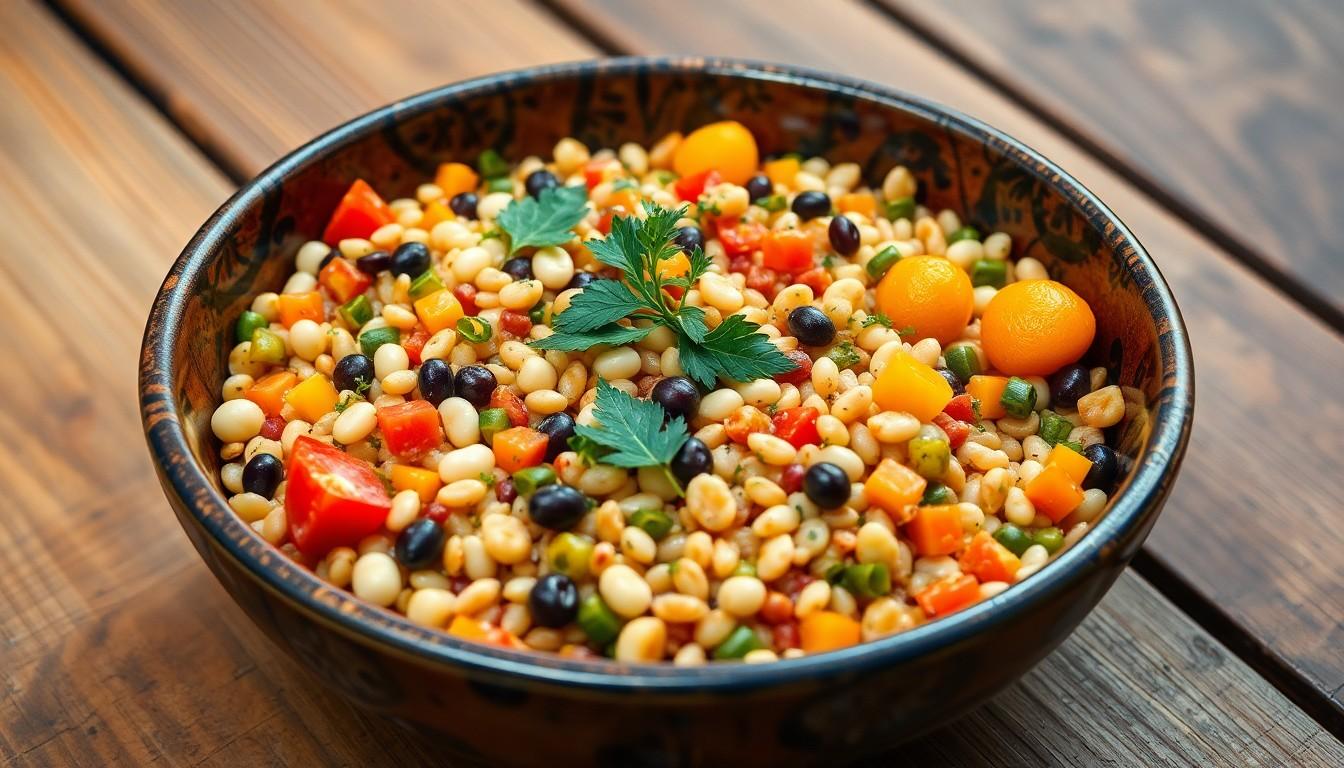Can You Eat Glisusomena? Discover This Unique Dish’s Surprising Health Benefits

Curiosity often leads to the most unexpected culinary adventures. Imagine stumbling upon glisusomena, a dish that sounds like it belongs in a sci-fi movie. But can you actually eat it? Spoiler alert: the answer is more tantalizing than you might think.
Overview of Glisusomena
Glisusomena represents a unique culinary creation that sparks curiosity among food enthusiasts. This dish, characterized by its uncommon ingredients, invites exploration into its flavor profile and nutritional value. Originating from specific culinary traditions, glisusomena combines various components to create a distinct taste experience.
Nutritionally, glisusomena offers numerous benefits, depending on its preparation methods. Ingredients may vary, but many dishes in this category incorporate rich sources of protein, vitamins, and minerals. Commonly used elements include grains and legumes, known for their health advantages.
Preparation of glisusomena can involve various cooking techniques, including steaming, frying, or baking. Each method brings out different flavors and textures, appealing to diverse palates. Observing these techniques can inspire home cooks to experiment with their own versions of the dish.
Culturally, glisusomena reflects the culinary traditions it stems from. Each region may have its own take, with local ingredients adding to its versatility. Exploring these cultural variations reveals how glisusomena adapts to different tastes and preferences.
Overall, glisusomena stands out as an intriguing dish that blends nutritional benefits with rich flavors. Culinary enthusiasts frequently seek ways to incorporate such unique dishes into their cooking repertoire, keeping the spirit of exploration alive in their kitchens.
Nutritional Value of Glisusomena

Glisusomena offers an intriguing blend of flavors and nutritional benefits. This dish typically features diverse ingredients that contribute to its overall health profile.
Health Benefits
Nutritionally rich, glisusomena often contains substantial amounts of protein, fiber, and essential vitamins. It frequently includes grains and legumes, which supply vital nutrients. Fiber aids digestion, helping maintain gut health. Protein supports muscle repair and growth, making it valuable for active individuals. Vitamins found in glisusomena play key roles in immune function and overall vitality. Iron present in legumes enhances energy levels, while various antioxidants combat oxidative stress. Incorporating this dish into a diet encourages balanced nutrition and promotes well-being.
Potential Risks
Despite its health benefits, glisusomena presents potential risks. Allergens from specific ingredients can pose challenges for sensitive individuals. Certain legumes may cause digestive discomfort in some people, leading to bloating or gas. Preparation methods also impact the nutritional quality. Overcooking can reduce vitamin content and eliminate beneficial properties. Individuals with food sensitivities or specific dietary restrictions must exercise caution. Ensuring fresh, quality ingredients minimizes risks and enhances the dish’s overall appeal. Balancing it with other foods provides a comprehensive approach to nutrition.
Culinary Uses of Glisusomena
Glisusomena offers a fascinating culinary experience. Its unique flavor and nutritional benefits make it a versatile ingredient.
Preparation Methods
Steaming, frying, or baking contributes to glisusomena’s diverse flavor profile. Steaming keeps moisture intact and preserves nutrients while enhancing its natural taste. Frying adds a crispy texture that many enjoy. Baking often combines ingredients, allowing flavors to meld and create a rich dish. Using marinades or spices while preparing can elevate the overall taste. Home cooks find these methods suitable for experimenting with glisusomena’s potential.
Popular Dishes
Various culinary traditions showcase glisusomena in delightful ways. In some regions, it appears in hearty stews, where grains and legumes simmer together for hours. Side dishes often feature glisusomena served alongside grilled meats or vegetables, adding nutritious components to meals. Street vendors sometimes present it as a savory snack, popular among locals for its taste and protein content. Each regional variation brings unique ingredients, reflecting local flavors and preferences. Chefs appreciate glisusomena’s adaptability, making it a staple in many kitchens.
Cultural Perspectives on Eating Glisusomena
Cultural attitudes towards glisusomena vary significantly across regions. In some communities, glisusomena signifies celebration, sharing its unique culinary experience during festivals. Regional variations exist, adapting the dish to local tastes and available ingredients.
Traditional recipes reflect cultural heritage, with each community infusing its customs into the preparation of glisusomena. These adaptations showcase ingredients native to specific areas. For instance, in some cultures, incorporating locally sourced grains enhances both flavor and accessibility.
Social implications also arise when discussing glisusomena. Many view it as a dish that promotes togetherness, served at family gatherings. Its presence on tables often symbolizes hospitality and warmth, inviting guests to partake in a communal dining experience.
In culinary circles, glisusomena garners interest for its versatility. Chefs experiment with various preparation methods, embracing creativity. They explore unique combinations of spices and ingredients, pushing the boundaries of traditional preparation.
Nutrition plays a vital role in the cultural perspective of glisusomena. Communities appreciate its health benefits, often emphasizing its role in diets rich in protein and essential vitamins. People recognize that these benefits contribute not just to personal health but also to cultural identity.
Food festivals and markets celebrate glisusomena, highlighting its significance in local gastronomy. Street vendors often offer glisusomena as a popular snack, showcasing its adaptability to casual dining. Food enthusiasts regard it as a must-try dish, eager to explore its flavors.
Overall, glisusomena represents more than just a meal; it serves as a cultural symbol. This dish embodies the essence of community, tradition, and culinary innovation.
Conclusion
Glisusomena stands out as a remarkable dish that invites culinary exploration. Its unique blend of flavors and nutritional benefits makes it an attractive option for those looking to expand their palate. While it offers a delightful taste experience, individuals should remain mindful of potential allergens and preparation methods.
The cultural significance of glisusomena adds another layer to its appeal, connecting people through shared meals and traditions. As food enthusiasts continue to experiment with this versatile dish, glisusomena is likely to inspire creativity in kitchens around the world. Embracing this culinary curiosity could lead to memorable dining experiences that celebrate both flavor and community.
